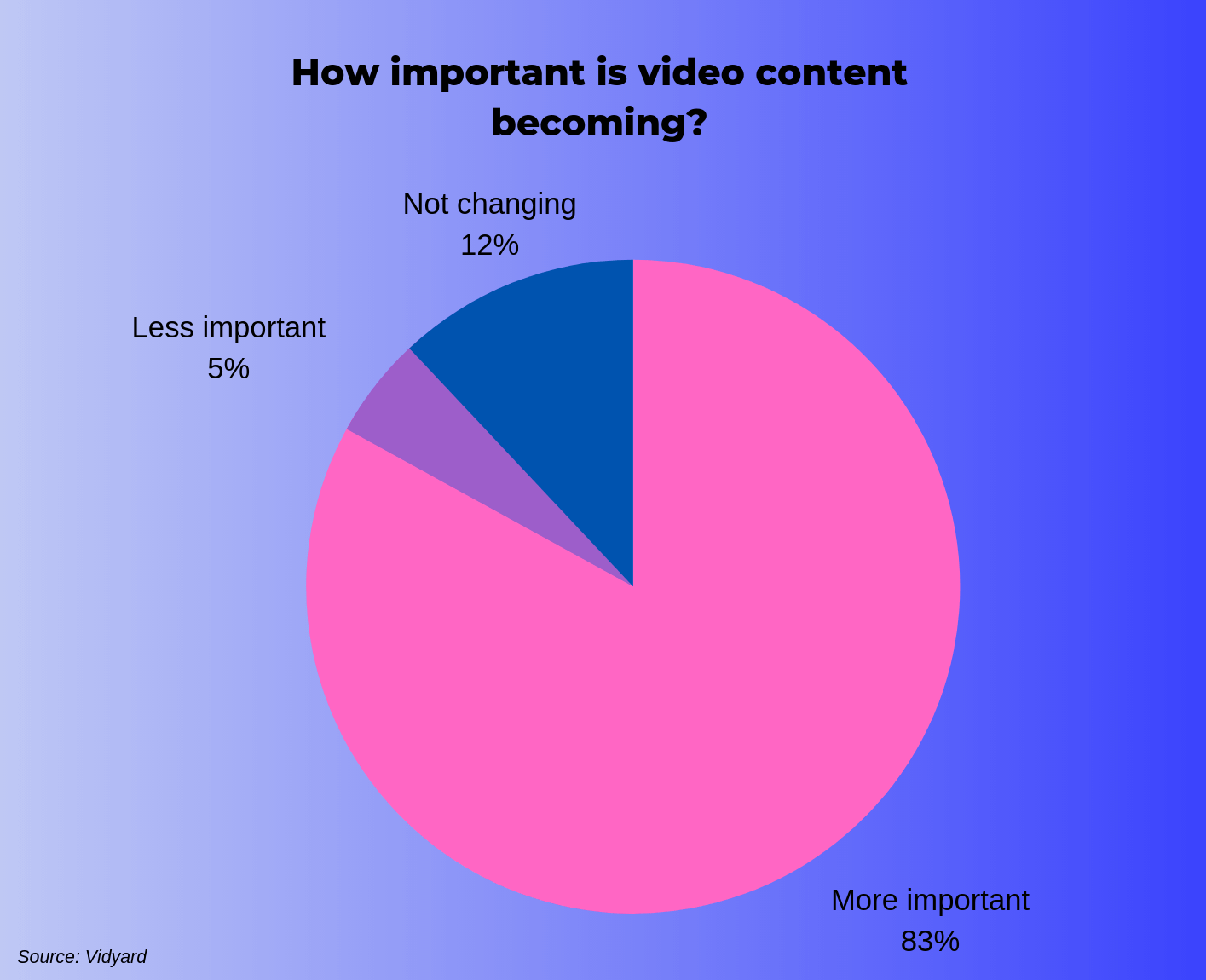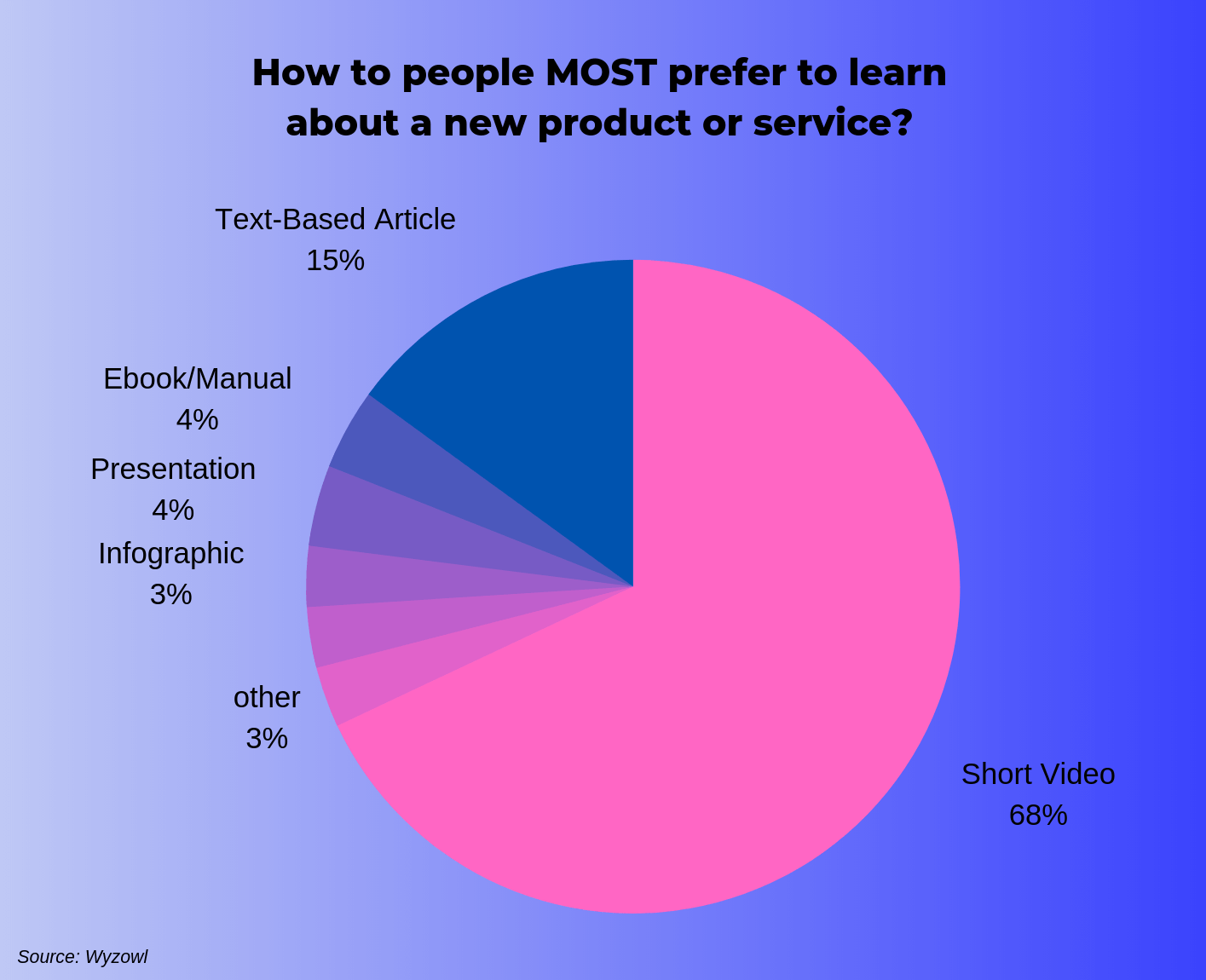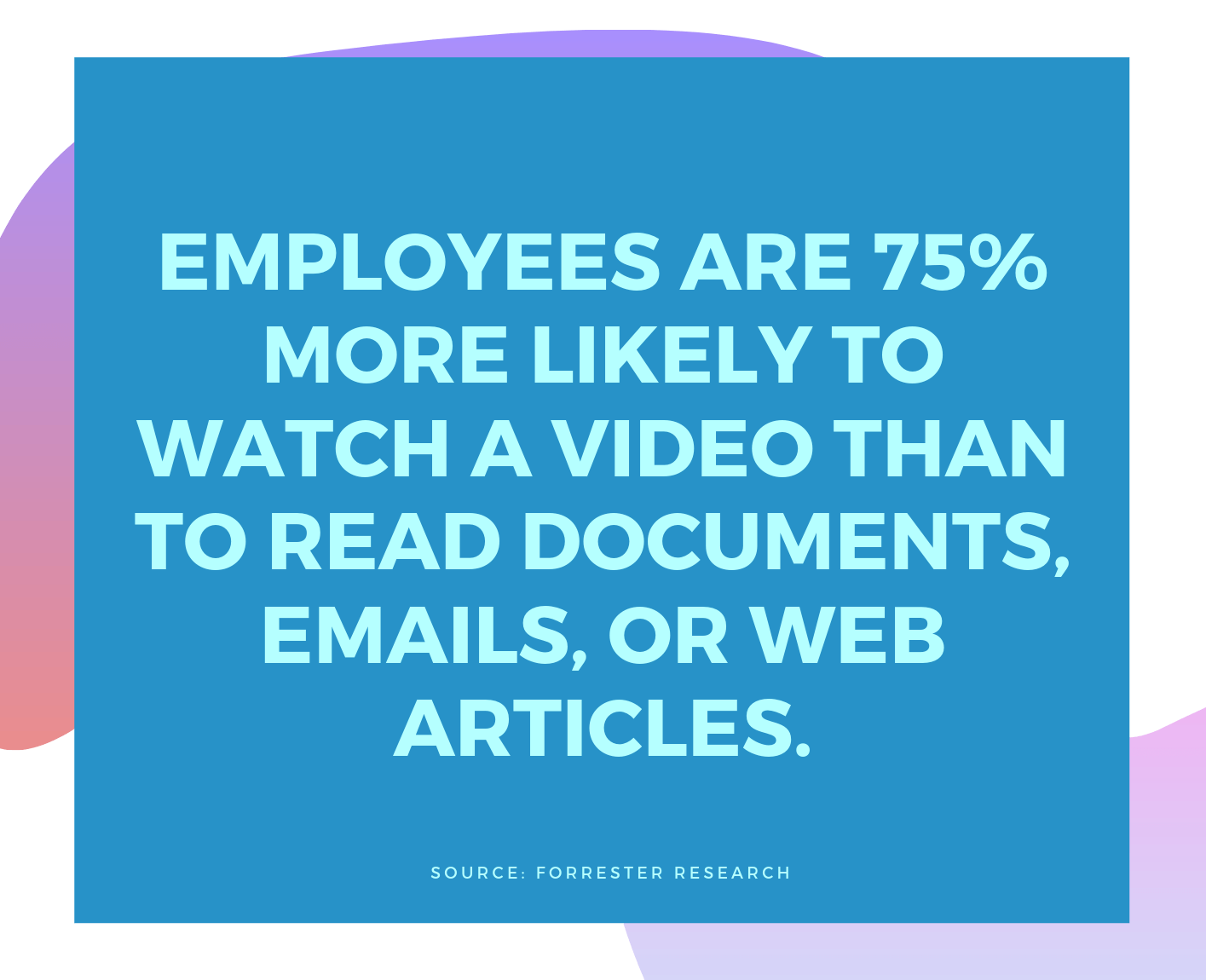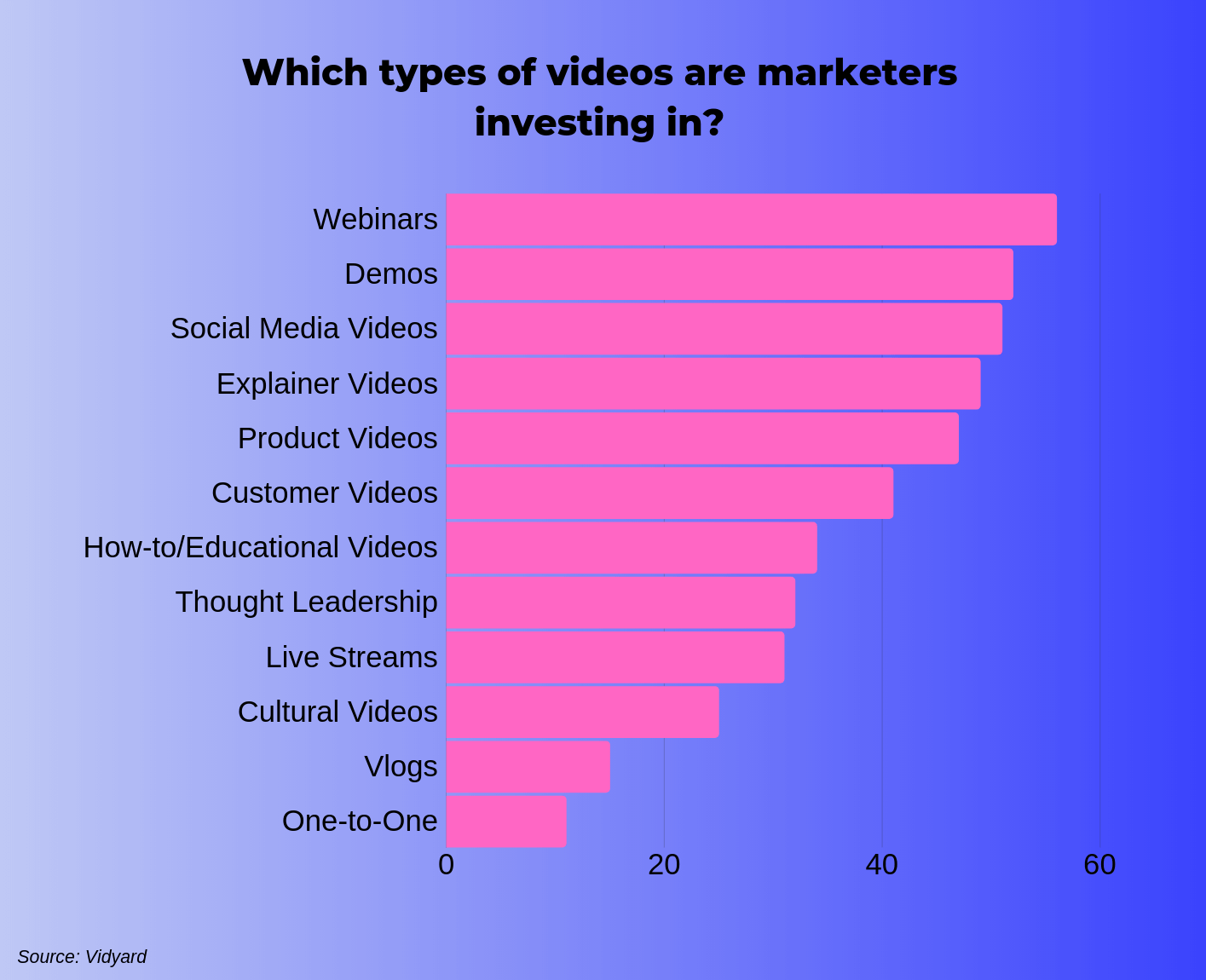These days organizations are expected to create all types of content:
- Emails
- Blogs
- Videos
- Infographics
- Presentations
- Podcasts
- Social media posts
It’s not a matter of one solution being right and the other wrong. But when you consider what type of content to create, video should be on the top of your list.
According to Demand Metric, in partnership with Vidyard, 83% of survey respondents said that video is increasing in importance.
And this doesn’t just apply to marketers.
A video is ideal to use any time there are many steps, or the process involves movement. This why video is becoming a key tool for marketing, sales, training, and support teams.
Today you’re going to learn exactly why video is the most important type of content you can create this year (and what videos you can start making today).
Why video is important
If you’re still wondering if video is worth the hassle, I hope we’ll be able to convince you to get started.
First, understand that video is demand from consumers. Learning and educational content alone drives over a billion views a day on YouTube.
According to Wyzowl’s State of Video Marketing Survey 68% of people say they’d like to learn about a new product or service by watching a short video.

That a big opportunity for you to create valuable content around what people are searching for.
Wyzowl’s research reveals that video is much more desirable than text-based articles (15%), infographics (4%) presentations (4%) ebooks, or manuals (3%) for learning information.

But why exactly are videos becoming more popular compared to the rest of the options?
Look no further than The Four E’s of Video:
The four E’s of great video content
To get a better view of the video and business landscape, we recently sat down with Vidyard’s VP of Marketing, Tyler Lessard and he shared with us what he feels makes video much more effective than other content mediums.
When comparing video to other types of content, Tyler says there are four qualities, the Four E’s of Video as he calls them, that video has to stand out amongst a sea of choices.
And videos that have these qualities are especially powerful in a business environment.
So, why video? Because good videos are:
1. Engaging
“Our brains are hard-wired to engage in storytelling, as a narrative arc compared to other forms. And video is a great way to tell a story and engage.”
There’s a reason that often times the best communicators are the best storytellers. People are drawn to a good story. The better you are at telling a story with your video content, the better your video will be received.
2. Emotional
“There’s an opportunity to connect more emotionally with prospects and buyers through video as a medium…having people on camera and connecting can stimulate different kinds of emotions that the written word can’t.”
A video, even if it’s just your voice over a screen recording, provides valuable context that cannot be gained from text alone. Videos let you establish authority and a more personal feel to your message.
You will be far more likely to connect on an emotional level with your audience if you use video versus another content type.
3. Educational
“Our brains process visual information faster than text. We store either long-term memory and text the short-term memory and so on. And, so there are lots of reasons why video is a great educational medium and can be more memorable.”
In today’s world, organizations must put an emphasis on providing educational videos to employees.
In fact, according to Forrester Research, employees are 75% more likely to watch a video than to read documents, emails, or web articles. If you want something communicated effectively throughout your organization a video is a go-to medium.

4. Empathetic
“The ability to establish greater empathy with our audience by, again, putting the human face out there…I think video and having real people talk to you about solving real problems, in real language goes a long way.”
Not only do you want to help your audience with your video, but you want to show that you truly care about the problem they are having and how you can help solve it. The more authentic you are with your audience the more likely they are to see you as a trusted guide.
Video is now a requirement, not a recommendation
Whether you work in a large organization, a small business, or educational institution you can’t avoid it, video is now a must.
But it can be daunting to even know where to begin.
That’s why one of the best videos to start with is an instructional video.
These videos simply show off your knowledge to someone else. Whether you need to demonstrate a technical process for a new product feature or teach your new coworker how to use her email, a video is a great way to communicate.
Over half of the most common type of videos that marketers are investing in are a type of instructional video. That gives you a lot of good videos to start with.

Here are a few ‘how-to’ guides we’ve put together to help you get started:
- Demo video
- Explainer video
- Product Videos
- Live video
- Tutorial videos
- How-to / Educational videos
- Process videos
- Screencast videos
- Training videos
Are you ready to start making videos?
Camtasia is built for anyone who needs to make any kind of screen recorded video and has a ton of help videos to get you started. We make 100% of our tutorials and other screencasts using Camtasia.





